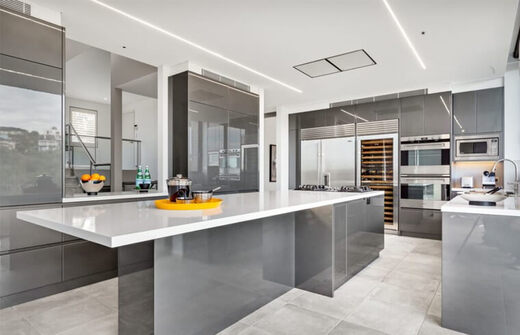Cabinets have played a fundamental role in home organization and storage for centuries. What began as simple, utilitarian fixtures has evolved into stylish and multifunctional pieces of furniture. This article explores the fascinating evolution of cabinet design, from its origins to modern-day innovations.

The concept of cabinets dates back to ancient civilizations, where rudimentary storage solutions were crafted from wood, stone, and other natural materials. These early cabinets served primarily functional purposes, providing storage for food, clothing, and valuables. In ancient Egypt, for example, cabinets were commonly used to store items such as jewelry, cosmetics, and foodstuffs in homes and tombs.
During the medieval and Renaissance periods, cabinetmaking evolved as a skilled craft practiced by artisans and craftsmen. Cabinets became more elaborate in design, often featuring intricate carvings, ornate details, and decorative embellishments. These cabinets were symbols of wealth and status, serving as both functional storage units and works of art. Royal and aristocratic households commissioned highly skilled craftsmen to create luxurious cabinets adorned with precious metals, exotic woods, and intricate marquetry.
The 18th and 19th centuries saw significant advancements in cabinet design, driven by technological innovations and changing social trends. With the Industrial Revolution, mass production techniques enabled cabinets to be produced more efficiently and affordably, making them accessible to a wider range of consumers. This period also witnessed the rise of specialized cabinetmakers and furniture workshops, each developing their unique styles and techniques.
In the Victorian era, cabinets reached new heights of opulence and extravagance. Inspired by historical revivals and exotic influences, Victorian cabinets featured elaborate ornamentation, intricate scrollwork, and richly embellished surfaces. Cabinets were often part of larger furniture ensembles, such as dining room sets and bedroom suites, reflecting the prevailing tastes and aesthetics of the time.
The 20th century brought about significant changes in cabinet design, influenced by modernist movements, minimalist trends, and technological advancements. Designers began experimenting with new materials, such as metal, glass, and plastic, leading to innovative and avant-garde cabinet designs. Functionality became a primary focus, with an emphasis on modular and space-saving solutions to accommodate changing lifestyles and urban living spaces.
Today, cabinet design continues to evolve, embracing a diverse range of styles, materials, and functionalities. Contemporary cabinets blend form and function, combining sleek, minimalist aesthetics with practical storage solutions. From custom-built kitchen cabinets to modular storage systems, modern cabinets cater to the diverse needs and preferences of homeowners.
The evolution of cabinet design reflects broader changes in society, technology, and design aesthetics. From humble beginnings as simple storage units to sophisticated pieces of furniture, cabinets have remained indispensable fixtures in homes around the world. As we look to the future, the possibilities for cabinet design are endless, driven by innovation, creativity, and a commitment to both style and functionality.
By continuing to use the site you agree to our privacy policy Terms and Conditions.